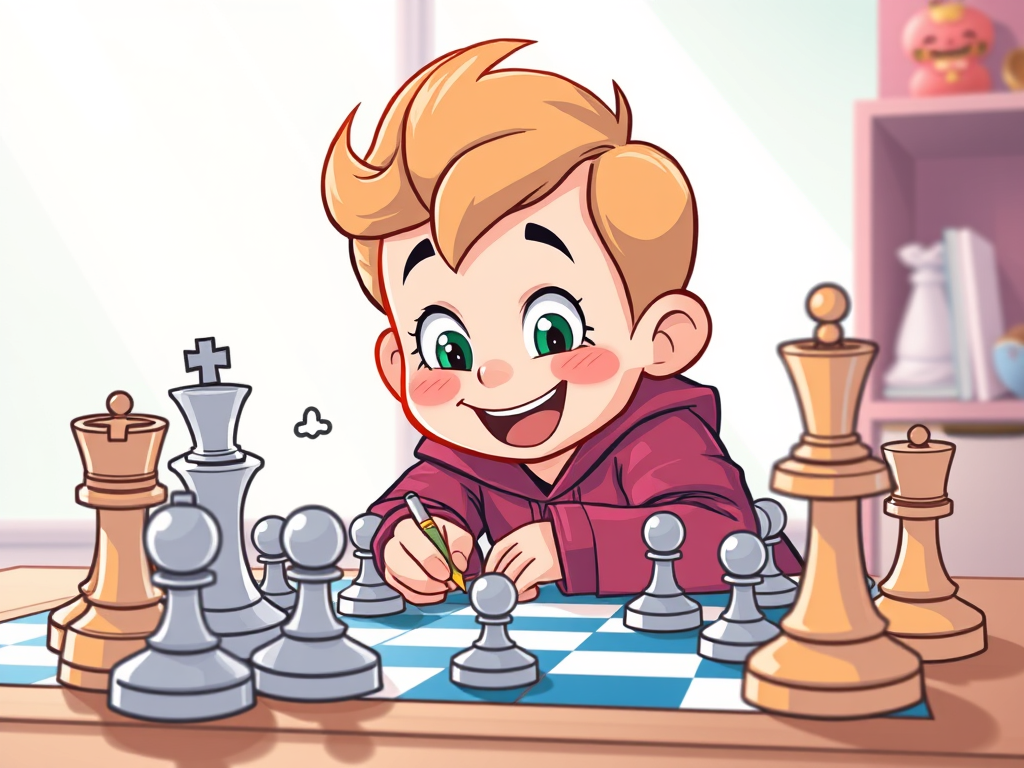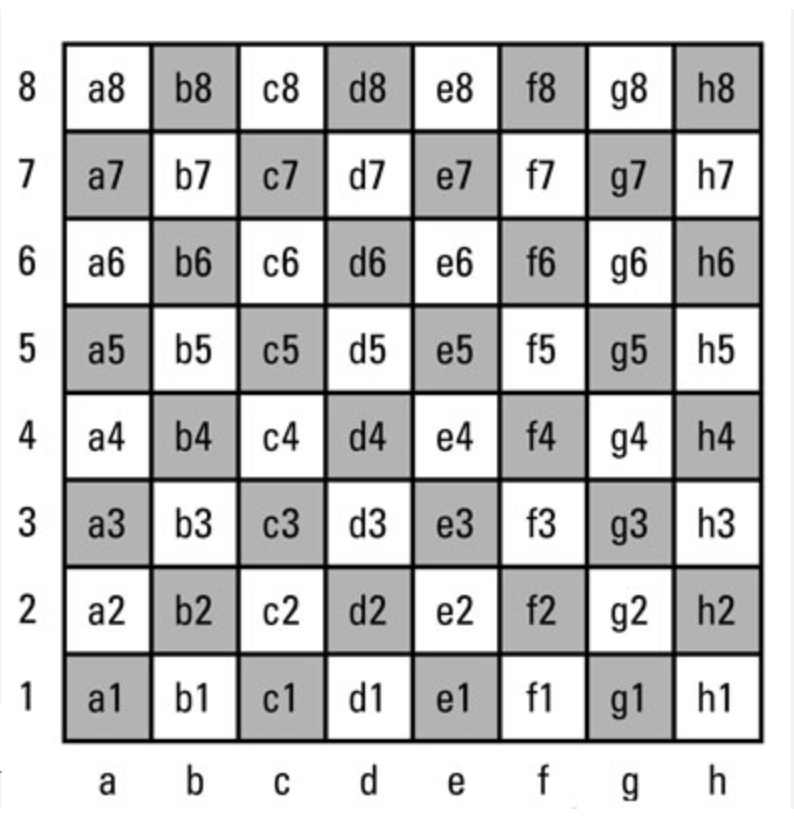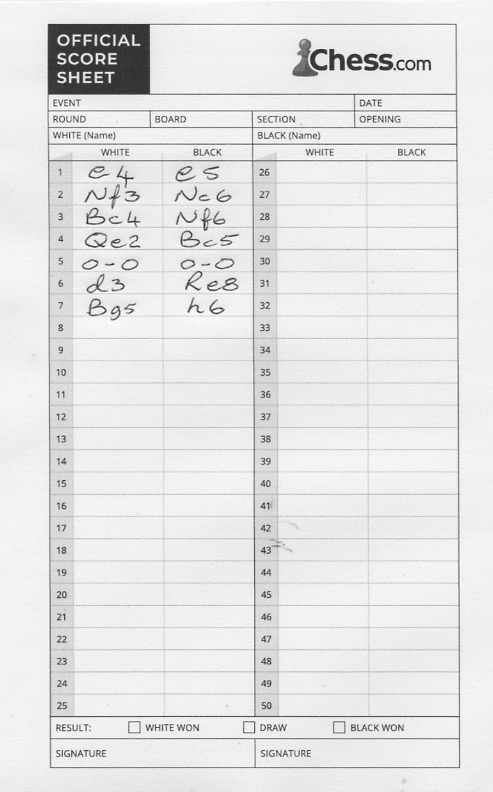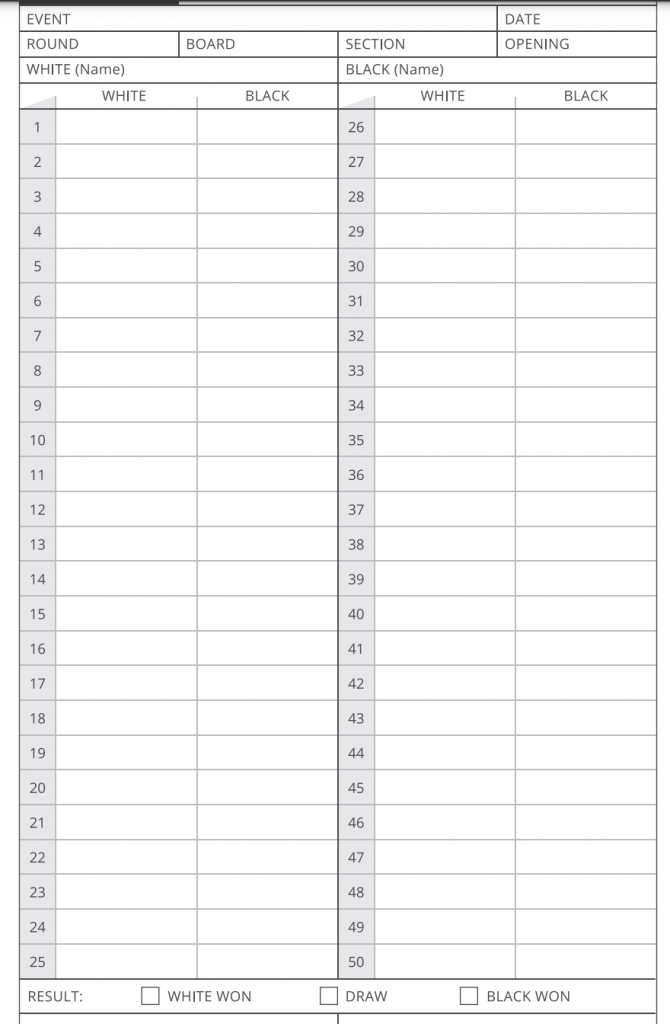
By recording your moves in a game and playing back through it, you can clearly see what you or your opponent did wrong, this is the best way to improve your game. If you don’t write your moves down, you’ll never know what really what wrong and when. You may be happy just to play game after game, win or lose, zippy-doo-dah, but to get good at chess, which I’m sure you all want, we need to analyse to improve, that starts with Notation.
Here is a game played recently by two of our members, which I have added my own thoughts and comments to the moves played.
So on Saturday this week I'm going to run through how to record a game, AND for a bonus, those who give it a try during a Ladder game will get an additional 1 point for effort or 3 points if the score sheet has been correctly filled in. To allow more time to do this, the clocks will be set at 15 mins each.
RECORDING A CHESS GAME
One of the most important things to do if you want to become a stronger player is to record your chess games and analyse them. The way that we do this is called Algebraic Notation. It is very simple and used by chess players all over the world.
Each of the 64 squares has a unique label of a letter and number as shown in the diagram below. At the start, White's pieces are on ranks 1 and 2 and Black's on 7 and 8.

A pawn is given no symbol but the pieces have symbols as follows:
- King = K
- Queen = Q
- Rook = R
- Bishop = B
- Knight = N
We also use symbols for special moves:
- Castling Kingside = 0-0
- Castling Queenside = 0-0-0
- Check = +
- Double Check = ++
- Checkmate = #
- en passant = e.p.
- Captures = x
We indicate a move by giving:
- The move number in the game
- The symbol of the piece
- The square it moves from (if it isn't obvious)
- The square it moves to
- If it captures a piece, we put an x before the final square coordinates
Those moves should look like this on a score sheet;-

Download a Score sheet to practice on
Or copy and paste:-
